
The view down the Skyline Trail, Mount Rainier National Park / Rebecca Latson
In 2014, I wrote an article about telling stories with your national park images. That article concentrated on using your photos to tell a story to your audience about what you saw and experienced, understandable to everybody, without the use of words.
Now, I want to show you how to create a theme within the story of your national park photos. Themes can improve your powers of observation and make you a better photographer.
What is a theme? According to Google, “a theme in a story is the major idea that the story leans on or surrounds.” I know you may not have a theme in mind when visiting a national park, especially if you are there for only one or two days. I know you are intent upon photographing everything, right? I’ll wager, among all those images on your memory cards, you’ll probably find some subject or idea which repeatedly grabbed your attention and on which you found yourself concentrating your photography.
For instance, I’ve realized I tend to capture quite a few trail images while hiking. I’m a fan of the leading line technique, and trails make great leading lines, guiding the audiences’ eyes from one part of the photo to the other. Trail photos also infer a continuation of the national park experience. Where will that trail take you?
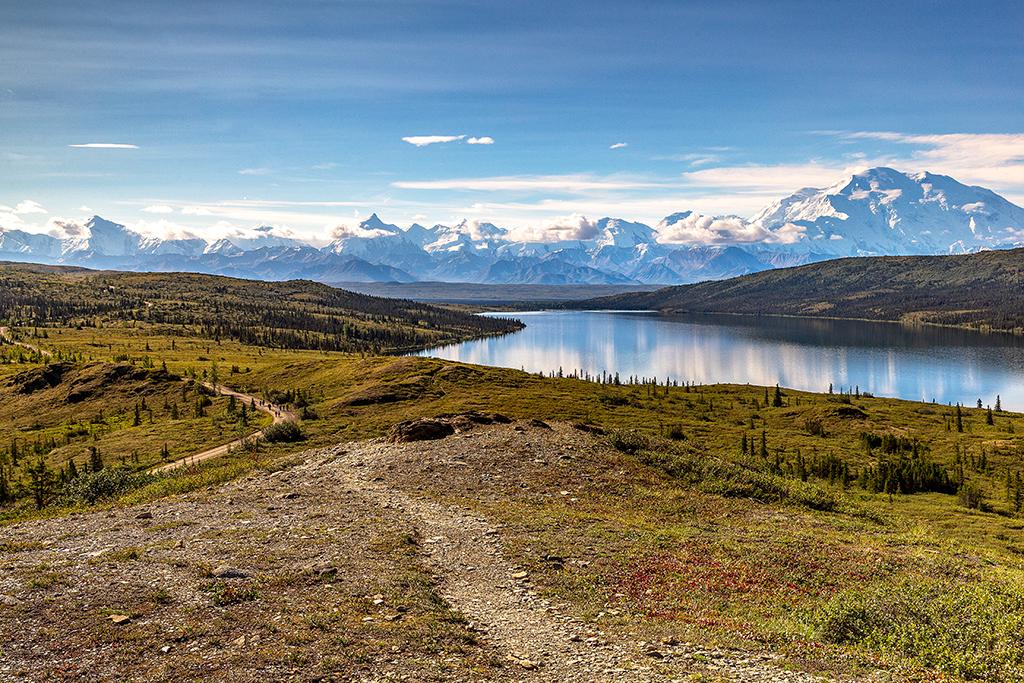
The trail near Wonder Lake, Denali National Park & Preserve / Rebecca Latson

The Highline Trail, Glacier National Park / Rebecca Latson
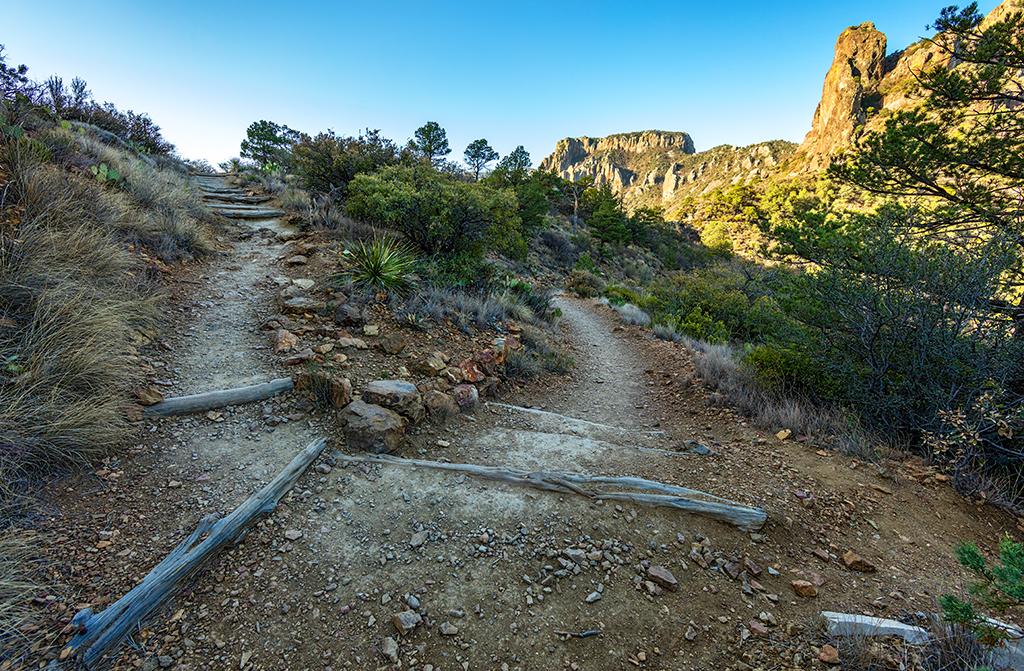
Turning the curve along the Lost Mine Trail, Big Bend National Park / Rebecca Latson

The trail around Tipsoo Lake, Mount Rainier National Park / Rebecca Latson
On a side note, leading lines are not just relegated to trail compositions. Almost anything can be a leading line, as long as it moves your eyes from one end of the composition to another. I’ve used rivers, streams, horizons, roads, fences, anything that creates some sort of connection from Point A to Point B in my image.

The road to the cliff dwellings, Mesa Verde National Park / Rebecca Latson

The road through the park, Denali National Park & Preserve / Rebecca Latson

Enjoying the view at Bryce Point, Bryce Canyon National Park / Rebecca Latson
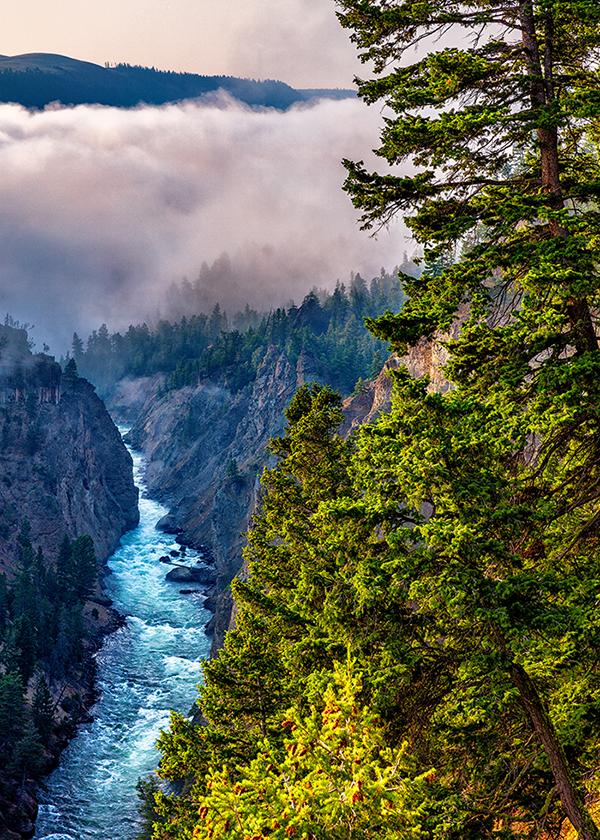
A morning view of the Yellowstone River, Yellowstone National Park / Rebecca Latson
Ok, back to the subject of finding a theme. If you visit Big Bend National Park during the months of March through May, in between all those Chisos Mountains and Chihuahuan Desert shots you capture, you might notice the amazing shades of brilliant magenta, orange, yellow and red blooms on the cactus. You could build a theme around all the cactus blooms you see, or around just a single color or single cactus variety. Strawberry pitaya, cholla, and eagle claw cactus blooms yield subtle variations of magenta. Prickly pear cactus blossoms vary in shades from yellow to melon to bright orange.
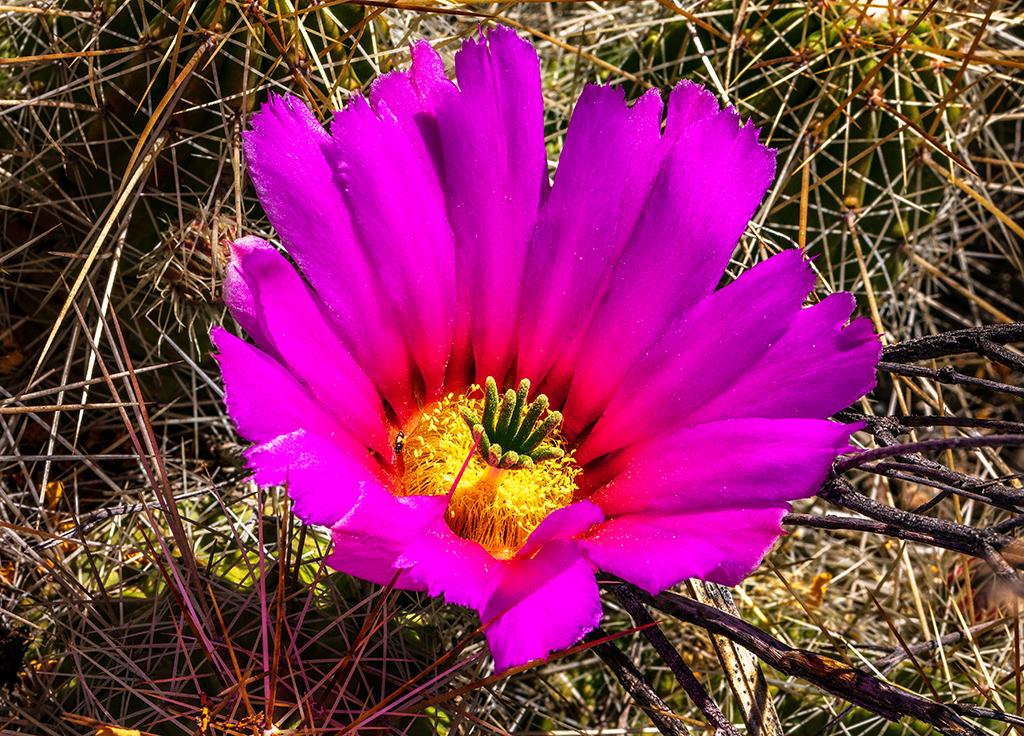
Strawberry pitaya cactus bloom, Big Bend National Park / Rebecca Latson

Cholla cactus blooms, Big Bend National Park / Rebecca Latson

Eagle claw cactus blooms, Big Bend National Park / Rebecca Latson

A bee in the yellow prickly pear cactus bloom, Big Bend National Park / Rebecca Latson

A bright orange prickly pear cactus bloom, Big Bend National Park / Rebecca Latson

Melon-colored prickly pear cactus blooms, Big Bend National Park / Rebecca Latson
I’ve photographed many sunrises in every park I’ve visited; sunrises and sunsets in different national parks make great themes.

Sunrise-gilded hoodoos at Sunrise Point, Bryce Canyon National Park / Rebecca Latson

An early-summer sunrise, Padre Island National Seashore / Rebecca Latson

Dawn's rosy glow, Mount Rainier National Park / Rebecca Latson
Your photographic theme doesn’t have to be relegated to just a single national park, you know. Nor do your photos have to be of a single subject, like cacti. You might be fascinated by the geology of glaciers and photograph glacial landscapes, such as U-shaped valleys, glacial moraines, cirques, aretes, and drumlins.
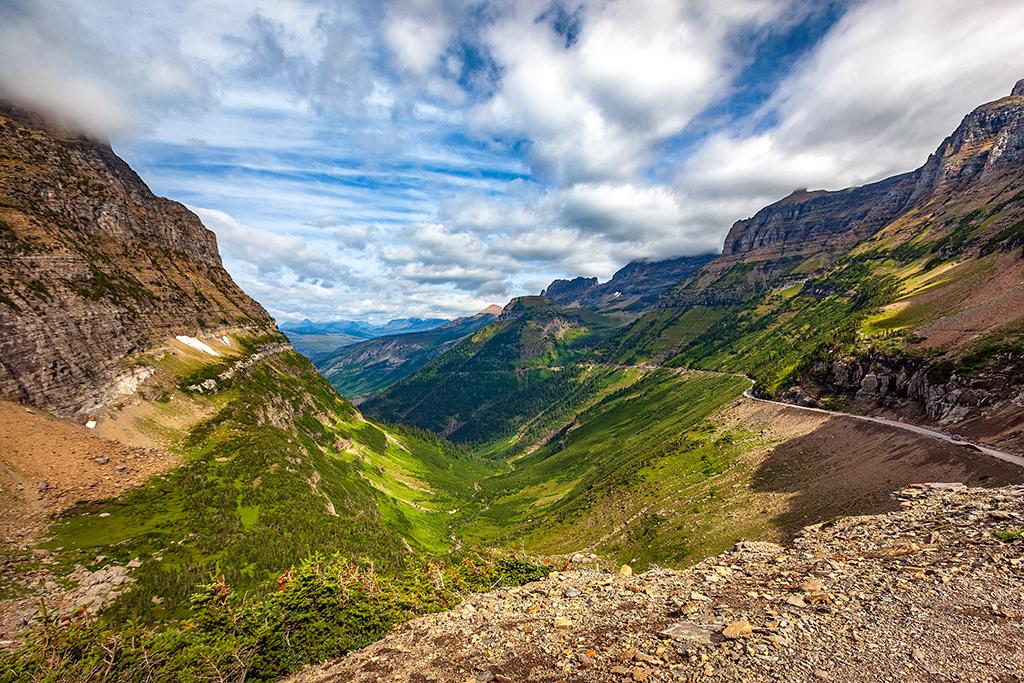
A U-shaped valley at Logan Pass, Glacier National Park / Rebecca Latson

Lunch Creek and a glacial cirque, Glacier National Park / Rebecca Latson

Glacial moraines and crevasses, Denali National Park & Preserve / Rebecca Latson

Coming in for a landing on Eldridge Glacier, Denali National Park & Preserve / Rebecca Latson
You could build a theme around wildlife, a specific animal, or wildlife found in a particular location of a national park. I spent a couple of days in the Many Glacier area of Glacier National Park, photographing at Fishercap Lake during different times of the day. Each time I visited this lake, a moose was out in the water, making that the theme of my Fishercap Lake story.

Fishercap Lake reflections, Glacier National Park / Rebecca Latson

Taking a dip in Fishercap Lake, Glacier National Park / Rebecca Latson

Portrait of a moose cow, Glacier National Park / Rebecca Latson
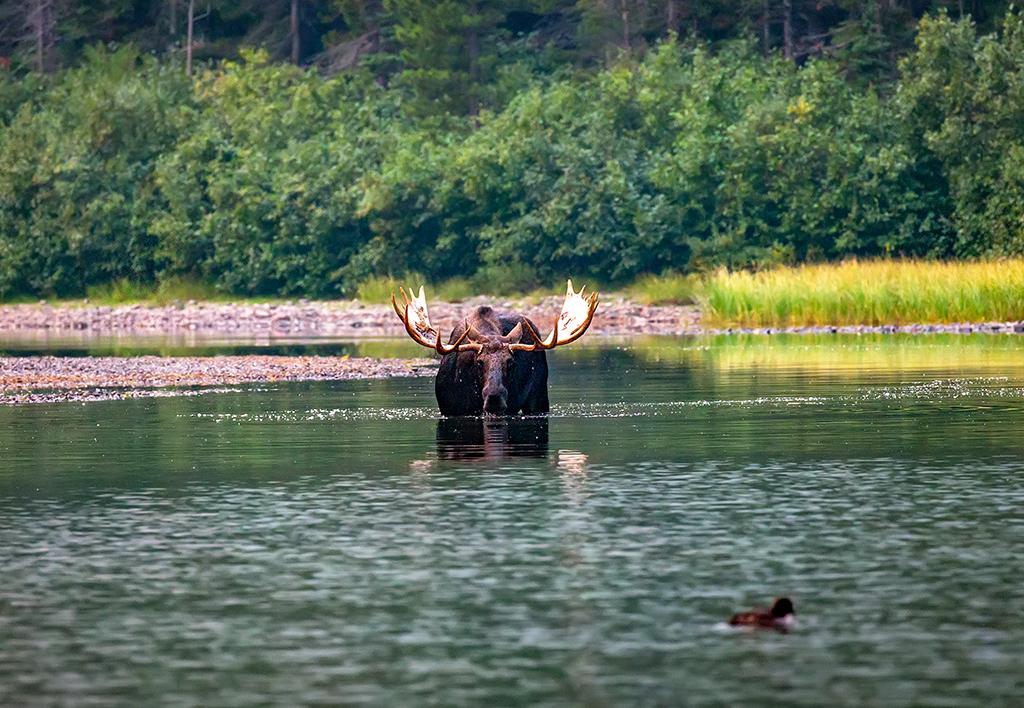
Bull moose in the lake, Glacier National Park / Rebecca Latson

Returning to the forest, Glacier National Park / Rebecca Latson
If you visit Olympic National Park, you might create a theme revolving around the temperate rainforests, filled with ferns and fungi and so many shades of green.

Fungus on a log, Olympic National Park / Rebecca Latson

Delicate little 'shrooms, Olympic National Park / Rebecca Latson

A fungi composition with a shallow depth of field, Olympic National Park / Rebecca Latson
You can also create a theme using park lodging and visitor center architecture from each of the national parks to which you’ve traveled. Most of my interior shots appear to be focused around dining (ahem) and resting (lodge rooms and lobbies).

The breakfast view at Camp Denali, Denali National Park & Preserve / Rebecca Latson
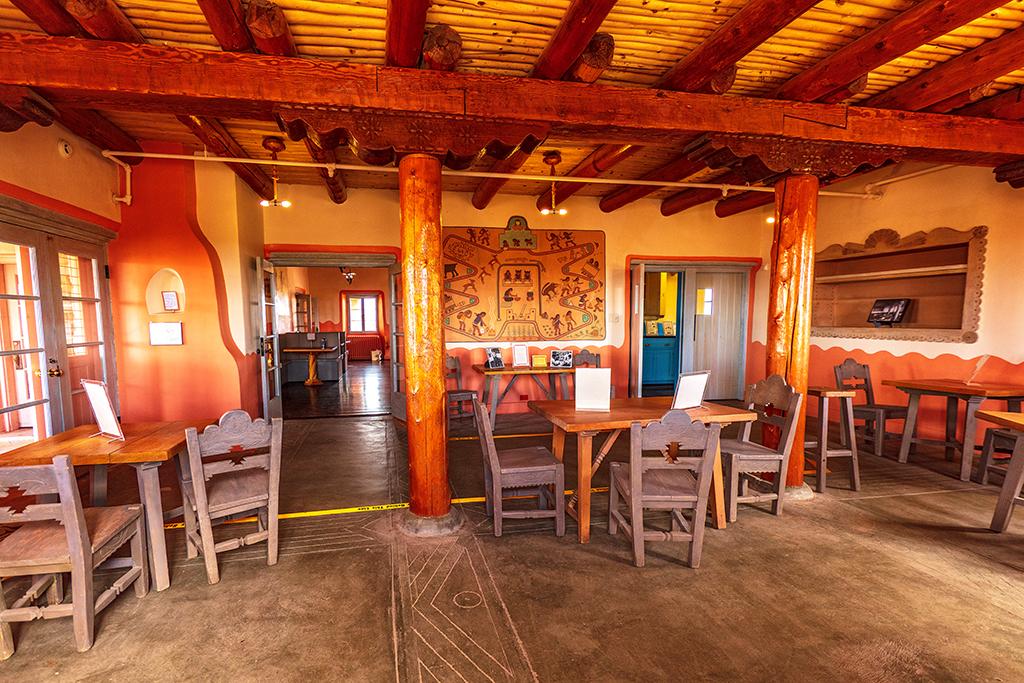
Painted Desert Inn, Petrified Forest National Park / Rebecca Latson
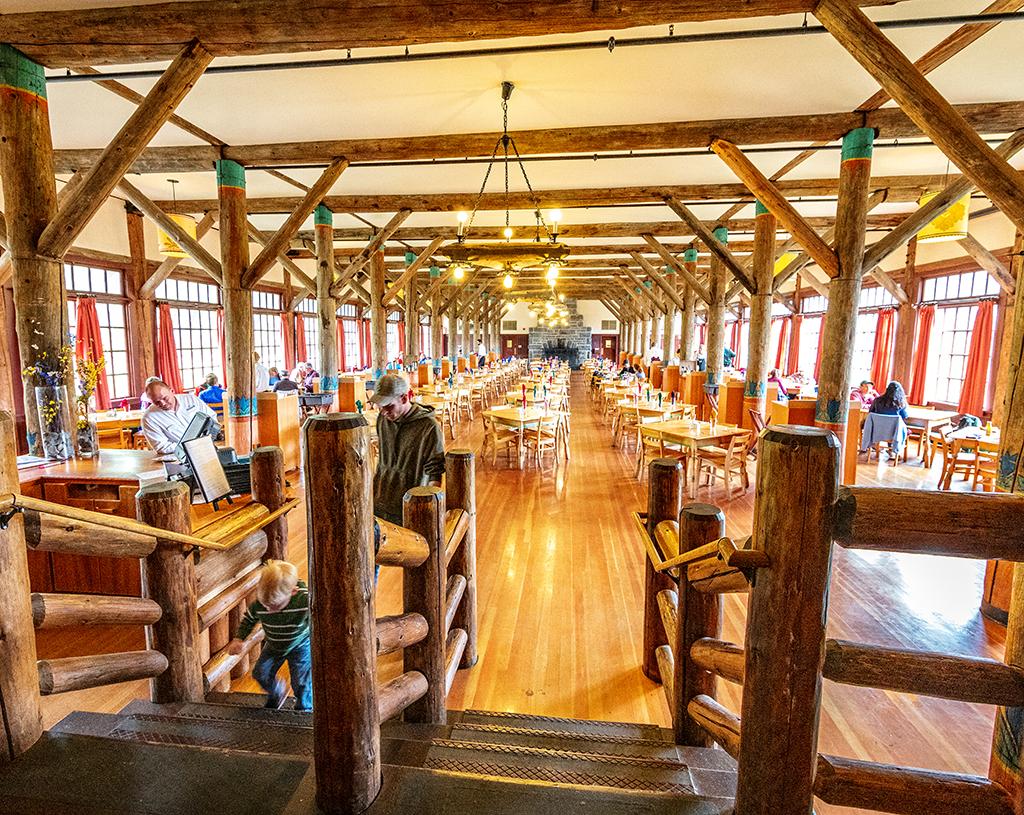
The Paradise Inn dining room, Mount Rainier National Park / Rebecca Latson

Kalaloch Lodge cabin, Olympic National Park / Rebecca Latson
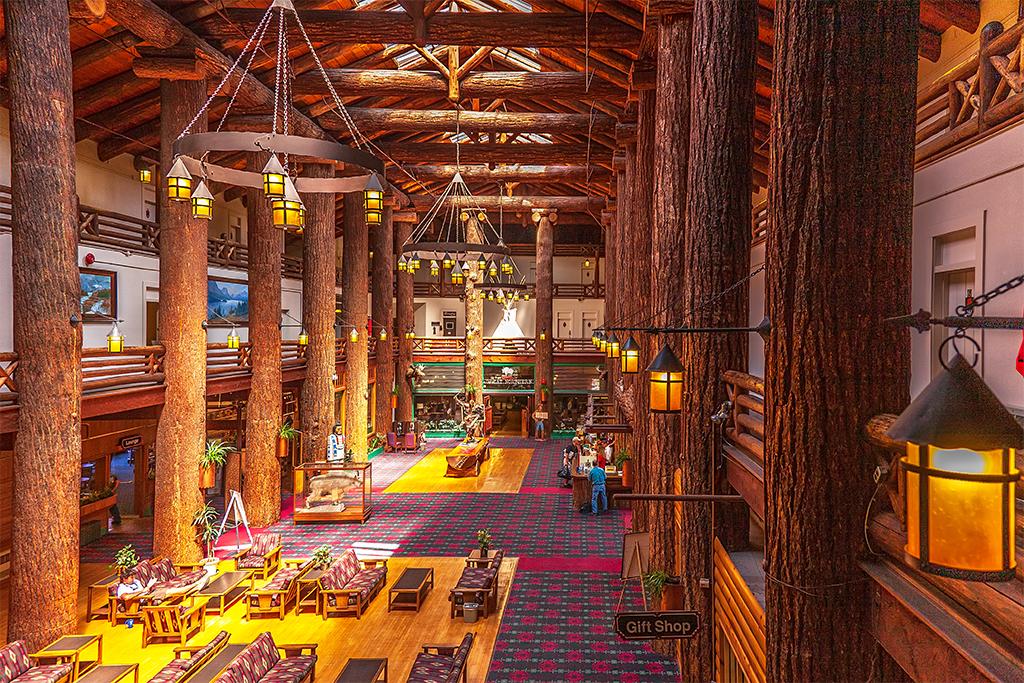
An expansive view of the Glacier Park Lodge lobby, Glacier National Park / Rebecca Latson
A visit to Yellowstone National Park will provide you with plenty of subject matter to create a photographic story centering around a trip to a well-known site like Biscuit Basin, Upper Geyser Basin, or Mammoth Hot Springs. This story would include geysers and hot springs and accessory sights you observe, like the orange, gold, and brown microbial veins leading from the hot springs, or the wildlife and birdlife congregating around those areas during certain times of the year, or the flowers and trees growing (or not growing) around that hydrothermal geology. From all of this, can you think of a theme to your geothermal story?
How do themes improve your powers of observation and your photography overall? Several blog posts I’ve read sum it up quite nicely. If you have an idea for a theme, then you are going to take more photos centering around that idea. The more photos you take, the more you’ll find yourself working on framing different variations and perspectives of that theme. Like any other talent you wish to improve, practice makes perfect. The more photos you take, the better you get. This improvement includes everything from composing your shot to honing your editing skills.
After reading this short list of ideas, you can see that thinking up a theme is not so difficult, is it? What kind of themes can you create for your next national park story? While you plan what to pack and where to stay overnight, conduct a little online research of the park, too. Use the Traveler’s search field to pull up articles about your destination. What parks are known for wildlife (Katmai National Park & Preserve, Lake Clark National Park & Preserve)? What parks are known for geology (Petrified Forest National Park, Bryce Canyon National Park, Grand Canyon National Park, Arches National Park, Hawai’i Volcanoes National Park)? What parks are associated with the sea (Padre Island National Seashore, Cape Hatteras National Seashore, Point Reyes National Seashore, National Park of American Samoa, Dry Tortugas National Park)? What parks are known for varieties of cactus (Big Bend National Park, Saguaro National Park, Joshua Tree National Park)? With that information in mind, stories and themes should be easy to come by.

Where will that trail (or boardwalk) take you? Yellowstone National Park / Rebecca Latso




 Support Essential Coverage of Essential Places
Support Essential Coverage of Essential Places






